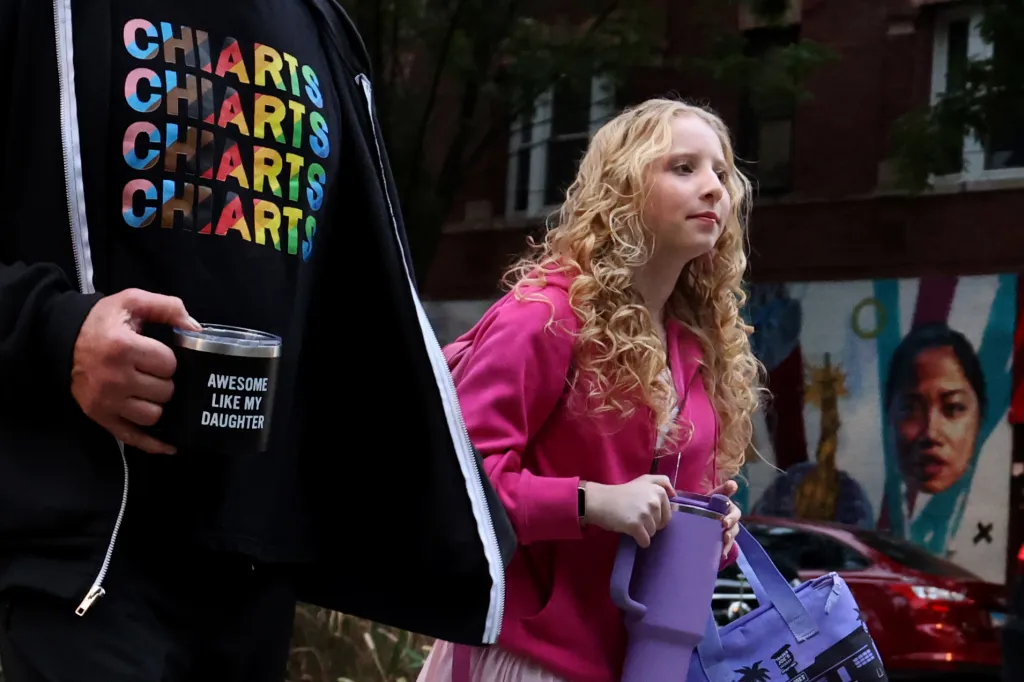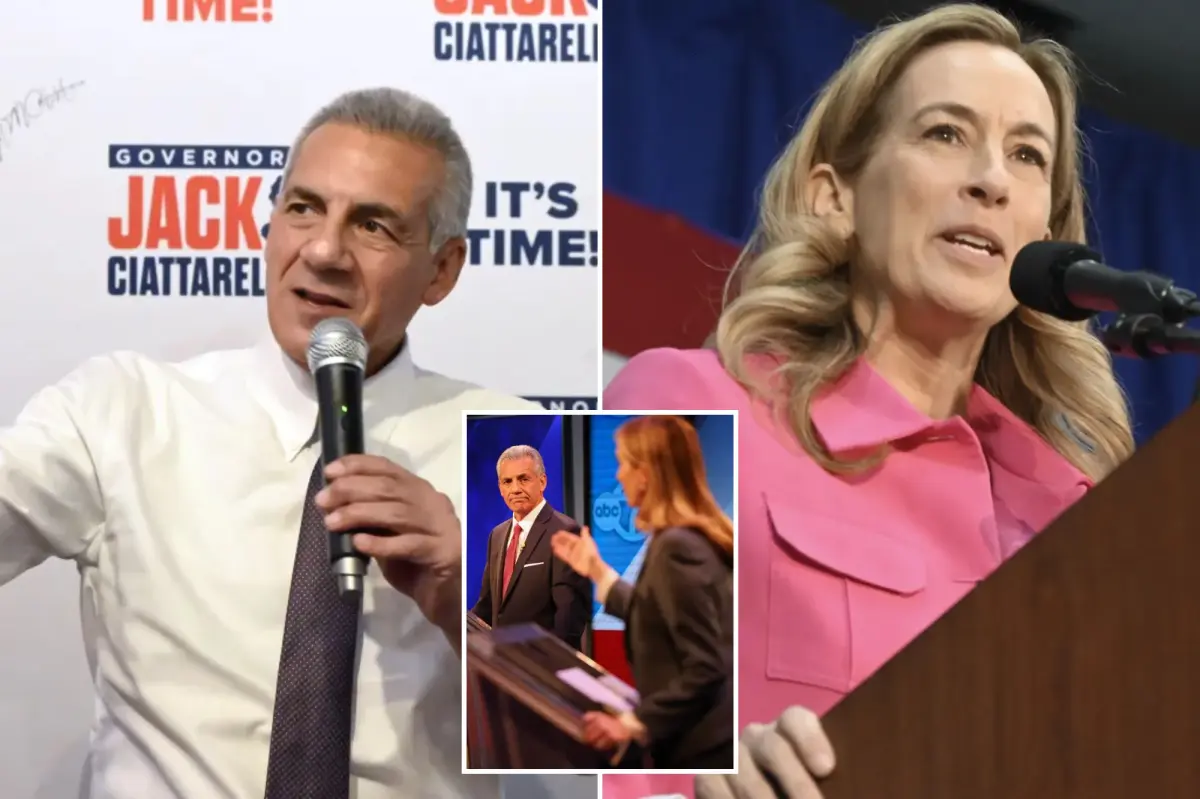Copyright Chicago Tribune

The halls that house The Chicago High School for the Arts have a history of creative expression coupled with resistance, and Andrea Gonzales knows them well. The senior visual art student is the second generation in her family to study in the vast building in Humboldt Park – once home to Lafayette Elementary School – the school her mother attended in the 1980s – decades before it closed in 2013. Adorning the walls is a mural depicting protests sparked by that closure over a decade ago — moments memorialized in art by students who attend ChiArts which took over the building in 2014. Gonzales is pictured with her mother in what was her fifth-grade classroom when it was Lafayette Elementary, smiling at each other from different desks. Earlier this month, when ChiArts’ board said it would not renew its contract with Chicago Public Schools, Gonzales and her peers feared history repeating itself – a school they love facing possible closure. So, like their predecessors did over a decade ago, they protested. ChiArts’ board cited a financial shortfall as part of its decision, following a pattern of uncertainty around CPS charter and contract schools that has plagued the district for decades. Charter and contracted schools are publicly funded and overseen by CPS but privately managed by independent boards. Those boards dictate decisions behind applying for contract renewals and school closures. The uncertainty surrounding her school’s future weighs heavily on Gonzales. Being in the building, knowing what it meant to people like her mother, it feels like ChiArts is living up to Lafayette’s history in a negative way, she said. “I don’t want it to be repeated like a generational curse,” Gonzales said. “It’s the same building, the same place, and it’s the same reason.” At ChiArts, the curriculum goes beyond science, math and English – its conservatory model emphasizes students harnessing their creativity with classes in dance, theater and writing. “People here at ChiArts say, ‘I want to become a dancer, I want to be an actress, I want to be a professional visual artist,’” Gonzales said. “That’s their goal coming here.” Students have shown up in droves to support their schools – attending board meetings and staging sit-ins in school hallways – all while trying to stay focused and on the education they fear might be lost if the district and school board do not step in. ChiArts’s community coupled with its conservatory model caught the interest of Piper Jade Laskey Terry when searching for high schools. The 15-year-old convinced her family to move from suburban Addison to a condo just down the block from ChiArts so she could enroll. The move was a big commitment for her family, she said, and required selling many belongings from their newly renovated house. Singing quietly, her father, John Terry, trailed his daughter as she walked to school an hour before classes started at 8 a.m. the morning of Oct. 14. Laskey Terry likes to be with her peers and teachers early, she said. Lately, there have been a lot of nerves throughout the student body, including Laskey Terry and her friends. As sophomores, she and her friends worry about not completing their education at ChiArts or having to go to a different school without the same conservatory curriculum. “I don’t even know what my neighborhood school would be,” Laskey Terry said. “I know that it wouldn’t be the same amount of musical theater or fun or anything like that.” As a parent, being near the school has meant his afternoons are filled with more music as his daughter’s friends accompany her on the short walk home, Terry said. They never know how many kids will roll through the door, he added. “That’s our new world now, and we’re okay with it, because they come in here, somebody jumps on the piano, and other kids start singing,” Terry said. “It just continues all that art right into our living room.” Experiences like those risk being lost without ChiArts, he added. He worries neighborhood schools could lack the accepting, loving, supportive environment ChiArts has. “It really is like nothing else I’ve ever heard of. It’s very inclusive, it’s very educational…you don’t get that level of art training in other places,” Laskey Terry said. A welcoming community is at risk at South Shore charter school EPIC Academy, whose board voted last month to close the school at the end of the year. Sophomore Latavia Lajeune, transferred to EPIC just weeks ago. Lajeune’s family moved blocks away so she could attend the school, which she said is filled with teachers who help to guide her peers who care about learning. “I just got there,” Lajeune said. “I can’t just move to another school and expect it to be okay when it’s not.” The anxiety and potential effect extend beyond herself. Lajeune worries about what will happen to her family and whether they will need to move again – especially her father, who works as a teaching assistant within the district. “If this school gets shut down and I have to go to another school, but it’s far away from here, it’s going to mean more problems and more challenges,” Lajeune said. “I don’t want him to throw his life away, all because of a shutdown of my school.” Troubled history of controversial contracted schools Charter schools were first proposed as a “magic bullet” solution to district-wide school performance issues, appealing to many families hoping for improved educational experiences for their children, according to Roosevelt University professor Stephanie Farmer. The charter school conversation began in Chicago in the 1990s and expanded rapidly under then-Mayor Richard M. Daley’s “Renaissance 2010” plan, which intended to open 100 new charter schools while closing neighborhood ones. That expansion coincided with a CPS population decline that created an excess of school choices for too few students, Roosevelt University professor Stephanie Farmer said. “I think they were thinking that the closures were going to just target the public schools, but now we are seeing that, since the support for charter schools is in decline, you also have the closure of the charter schools,” Farmer said. The issue is exacerbated when charter schools open near neighborhood schools and compete for the same students. Such is the case at EPIC Academy, where school leadership said competition with nearby schools contributed to a steady decline in enrollment alongside rising operational costs and revenue losses. Charter school critics, including the Chicago Teachers Union in a May report, argue the unregulated educational model has led to abrupt school closures, financial mismanagement and worse student outcomes among other issues. They aren’t alone. Other stakeholders – including parents and students at ChiArts and EPIC Academy – have also questioned and criticized the financial models of the schools. In addition to some CPS funding, charter and contract schools receive financial support from outside sources that can create a lack of transparency, Roosevelt University’s Farmer said, a sentiment echoed by multiple parents and students that the Tribune spoke with. CPS also decides whether to renew school contracts based on past data, which does not always predict future financial problems. Still, the Illinois Network of Charter Schools has pushed back against that perspective, maintaining that charter schools give students opportunities. No one is cheering the closure of a charter school, they are trying to serve students, INCS Senior Director of Advocacy Allison Jack said at an Oct. 8 school board meeting, drawing boos from some in the crowd. “Charters are not a failed experiment, and they’re not for-profit operators,” Jack said, adding, “…they’re offering programs that families are asking for and need and sometimes are a matter of survival, as you’ve heard from the passionate parents from ChiArts.” However, the schools have somewhat lost their sheen of newness in the years since opening, Farmer said, as only some showing higher academic performance than other neighborhood schools. Neither ChiArts nor EPIC Academy has seen 100% student proficiency in English language arts, math or science in the last three years, with EPIC performing worse in all three areas compared to the district average. In fact, EPIC’s English language arts, math and science proficiency rates paint a stark contrast to the district’s. In 2023, the most recent data available, EPIC trailed CPS in English language arts proficiency by 24 percentage points. EPIC’s math proficiency scores were 1.2 % compared to CPS’ 17.8% and their science proficiency scores were 3.9% whereas CPS’s were 36.8% An uncertain future ChiArts and EPIC Academy’s troubles are three-fold, CPS Chief Portfolio Officer Alfonso Carmona said at an Oct. 8 Chicago Board of Education meeting. Financial instability, declining enrollment, and the operational complexities of charter school transitions are hindrances, he added, noting taking over a charter school is complicated and has a series of steps. For now, the students’ futures remain unclear as the Chicago Board of Education grapples with the fate of charter schools, including a discussion scheduled for Thursday on whether to allocate $1.4 million to keep EPIC Academy open through the end of the academic year before ceasing on July 1, 2026. ChiArts is expected to be discussed at another special board meeting next week, according to school board member Carlos Rivas, who represents District 3B, where the school is located. “My goal is to keep it as a district-managed school, and then invest more so that we can expand the conservatory, so that more families have access,” Rivas told the Tribune Tuesday, adding that he’s gotten letters from not only affected families but also museums and arts organizations supporting ChiArts. “It was never on the table” for the district to close ChiArts, Rivas said, but rather, a question of what the school is going to look like under CPS control. In the meantime, students and families are continuing to advocate for the future of their schools. For Gonzales and other ChiArts students, that means putting the creative skills they’ve honed – making drawings, videos, and postcards to show board members the specialness of the school. ChiArts has individuality that Gonzales feels might hurt the school as it fights to be integrated into the CPS system of “traditional” schools. “We’re not borderline where it’s like the students here, the teachers here, are horrible. The issue here is we hold too much uniqueness,” Gonzales said. “It really does suck, like, how can we even get out of this sticky situation?”



